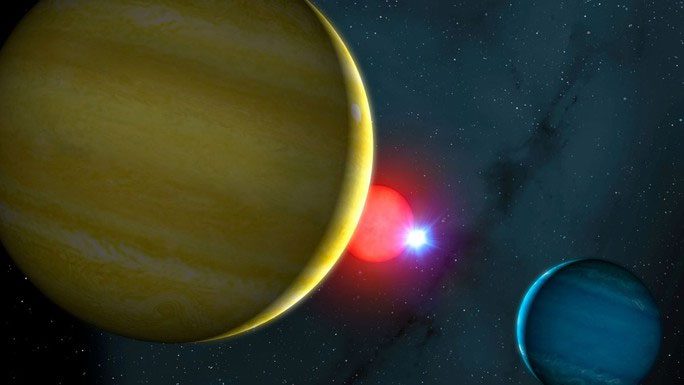Not just one, but two real-life versions of the fictional planet Tatooine have emerged around the binary star system BEBOP-1, located 1,320 light-years away from us.
According to Live Science, one of the two planets was initially discovered in 2020 and is named BEBOP-1b.
While trying to learn more about BEBOP-1b, a team of scientists led by Dr. Matthew Standing from the School of Physics and Astronomy at the University of Birmingham (UK) accidentally discovered a second planet in the system, BEBOP-1c.

Graphic illustration of the Tatooine-like planets featured in Star Wars – (Image: Mark A. Garlick/University of Warwick)
These planets belong to a rare group known as “Tatooine worlds.” This term refers to planets similar to Tatooine in the Star Wars films—a fictional planet with two suns illuminating it.
Fifteen Tatooine-like planets have been discovered in reality, but this is only the second instance of a system comprising multiple Tatooine-like planets. Most previous discoveries involved single planets.
The findings published in the scientific journal Nature Astronomy indicate that they have estimated the mass of BEBOP-1c to be about 65 times that of Earth, with a size comparable to that of Saturn. This size suggests it is likely a gas giant with a relatively low density.
Previously, it was believed that Tatooine-like planets were difficult to exist in reality because, unlike single stars like our Sun, binary star systems often have complex gravitational interactions, which were thought to complicate the formation of protoplanetary disks.
The first real-life Tatooine discovered, Kepler-16b, began to change perceptions, and multi-planet Tatooine systems like BEBOP-1 or the previously discovered Kepler-47 have led scientists to believe that many such worlds exist out there.
In fact, in 2021, scientists discovered a planet orbiting GW Orionis, a triple star system, meaning that planet would have up to three “suns.”
Within our Milky Way galaxy, there are countless binary star systems, many of which have been found but not yet observed to have planets. Scientists hope that more powerful telescopes in the future will help prove that “Tatooine” represents a more abundant class of planets than previously imagined.


















































